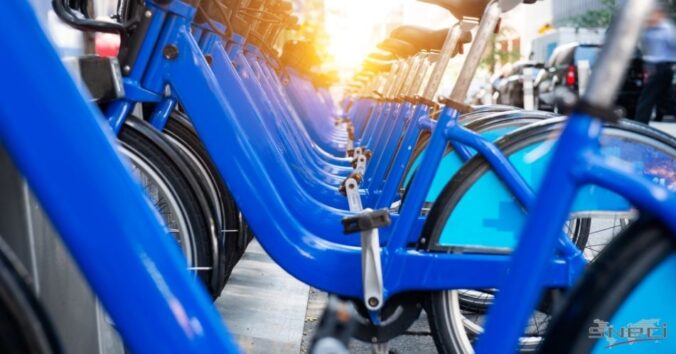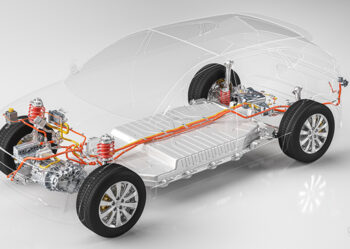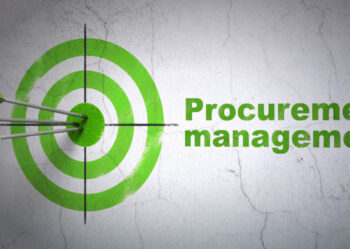When green mobility also requires the commitment of employers

At a time when companies are becoming increasingly aware of the importance of mobility, regardless of their field of activity, the employer mobility plan, also known as EMP, allows companies to support their employees in a green and more responsible mobility.
The Employer Mobility Plan or EMP for a green mobility for all
The Employer Mobility Plan (EMP) is a set of measures aimed at improving and optimizing employee mobility for all trips related to the company’s activity as well as home-office trips and vice versa.
The objective is to reduce greenhouse gas emissions and atmospheric pollutants, and to make roads more fluid by reducing congestion of infrastructures and means of transport, as stipulated in Article L1214-8-2 of the Transport Code.
In other words, the EMP, aims to encourage the use of alternative modes of transport to the private car.
This scheme and its implementation are strongly encouraged by the public authorities, which have deployed a whole series of interesting measures to attract companies, employees and local authorities.
For companies and local authorities, the EMP represents a real company project since it is part of a CSR approach as well as the implementation of a Quality approach or an Environmental Management System.
The EMP or Employer Mobility Plan: a legal obligation
Often ignored, the EMP is part of a legal framework, in fact, Article 82 of the Mobility Orientation Law (LOM) published on December 24, 2019 provides that companies with at least 50 employees on the same site are obliged to develop an Employer Mobility Plan.
This obligation aims to improve the daily home-work mobility of their staff, particularly in the context of an Employer Mobility Plan or in support of social dialogue on the measures to be implemented.
The law requires several things from the companies or communities concerned by this obligation:
- A mobility diagnosis (evaluation of existing and projected supply, analysis of home-work and work trips, etc.)
- A detailed action plan to orient travel practices towards more virtuous modes of transport
Of course, in order to be able to transmit the above-mentioned elements, the companies or communities concerned will have to set up studies and a project team that will then transmit the required documents to the territorially competent mobility organizing authority.
EMP to fight against head-scratching numbers
Numbers related to cars
- 57% of work-related fatal accidents are due to traffic; in public transport there are 70 times fewer accidents than in cars.
- A car emits about 4 g of CO/ km, 1 g of NOx, 0.3 g of VOC and 290 g of CO2/ km, when a bus produces 9 times less greenhouse gases.
- 50% of trips are less than 3 km long!
- With 4% less traffic, the traffic becomes fluid.
- Carpooling optimizes costs and parking spaces.
- 3 out of 5 working people work 15 km from their home, which is about 1 hour of transport per day…
- A bus is equivalent to saving 40 cars in traffic and space.
Numbers related to Cycling:
- A cyclist rides at 15 km per hour in the city, while the average speed of vehicles is 14 km per hour.
- Contrary to popular belief, a bicycle is 2 to 3 times less exposed to air pollutants than a car.
- For trips of less than 5 km, the bicycle is faster and does not pollute.
Numbers related to Health:
- 6 km on foot corresponds to 1 hour of walking, the recommended daily time to fight against weight gain and cardiovascular diseases.
- Stress would be the cause of more than 50% of all lost work days.
The EMP : who are the actors?
The success and the realization of an Employer Mobility Plan relies on the involvement of various actors, both internal and external. These stakeholders are the sine qua non condition for the success of the project.
Internally, the EMP is a cross-functional approach that requires the involvement of various departments such as management, HR, finance, communication (both internal and external), the CSE, HSQE, and of course the employees, who are the fundamental key to the success of the Employer Mobility Plan.
Externally, the ADEME offers technical assistance, not forgetting the Mobility Organizing Authority (AOM) to identify alternatives to the car on the territory. There are also the Regional Directorates for the Environment, Development and Housing (DREAL), which are the regional pilot for the implementation of public policies of the Ministries of Ecological Transition (MTE) and Territorial Cohesion and Relations with Communities (MCTRCT). The Chambers of Commerce and Industry (CCI) also play an advisory and coordination role and can encourage the grouping of joint employer mobility plans.
Lastly, consulting firms or engineering offices specialized in sustainable mobility can assist you in your approach, as SNECI does with its customers.
Finally, transport network operators can provide useful data for the diagnosis and participate in technical proposals to improve the offer.
EMP : 5 keys steps
1/ Launching phase, generally within 1 month :
- Assessment, involvement and communication with employees
- Identification of mobility issues and actions already implemented
- Definition of the project’s pilots and the convergence plan
2/ Mobility diagnosis, generally in 2 months:
- Evaluation of the potential use of each mode of sustainable transport
- Evaluation of the accessibility to the company for each mode of transport
- Cross-analysis of the modes of transport and accessibility for employees between their work and home locations
- Survey of employees on their mobility habits
3/ Co-creation of a convergence plan (or action plan) generally within 3 months:
- Definition of the objectives of the EMP for the employees and the company
- Definition of the implementation modalities of the convergence plan
- Creation of working groups: methods, actors, budgets, deadlines, etc.
4/ Animation of the company mobility plan generally throughout the year:
- Implementation of actions (e.g.: 10,000 steps challenge…)
- Internal communication (e.g. posters, emails, etc.)
- Installation of equipment on site (e.g. bicycle, recharging station, etc.)
- Information on mobility events (e.g. mobility week, bike day, etc.)
5/ Evaluation of the EMP throughout the year:
- Measures of the success of the actions
- Evaluation of behavioral changes on the part of employees
- Measure improvements in quality of life at work and performance
- Cross-analysis of expenses and costs avoided thanks to EMP
- Adaptation of the convergence plan based on the results and new objectives identified
A few tips: Change management takes time, don’t make employees feel guilty and find good ambassadors to convey the benefits of EMP. Hold regular meetings with the pilots and stakeholders to facilitate the implementation of EMP.
What are the benefits of the EMP and for whom?
The expected benefits are multiple and concern all employees as well as companies and communities as a whole.
For employees
- Saves time during commuting to read, phone, rest…
- Better balance between personal and professional life thanks to telecommuting.
- Improved well-being, motivation and above all health of employees thanks to the practice of active modes (cycling, walking) which have a positive impact on physical condition, morale and concentration.
- Increased purchasing power thanks to the reduction of costs related to transportation (gas, insurance, repairs, etc.).
- Increased safety thanks to a better control of road risks.
For the territory and the environment
- Less congestion on the roads
- Less noise pollution associated with road traffic
- Reduction of GHG emissions and air pollution.
- Increased attractiveness of the territory to businesses.
- Decrease in illnesses and health expenses caused by pollution and noise.
- Decrease in road safety and related expenses.
For your company
- Increased attractiveness to recruit and retain talent through improved quality of life at work and outside of work.
- Cooperation with local actors and neighboring institutions by pooling resources (PDMEC).
- Synergies with other internal projects such as the development of telecommuting or the completion of a Carbon Footprint.
- Reduction of costs related to work-related accidents and sick leave for employees. Improved employee efficiency thanks to the impact of physical activity and sports.
- Enhanced image contributing to a corporate social responsibility approach.
- A calmer social climate thanks to a consideration of the well-being of employees, their expectations and their needs.
- Greater punctuality of your employees, deliverymen, service providers.
- Improved accessibility of the site by improving cycling and pedestrian routes, public transport services and bicycle parking facilities
SNECI and the EMP :
At SNECI, our history of 70 years has intrinsically linked us to the mobility of tomorrow since we started our activity in 1952 with the automotive sector and this desire to move towards the automobile of the future through our customers and partners.
Today, in addition to accompanying our partners in all industries towards responsible industrial performance, in particular with the improvement of processes tending towards factory 4.0, we also accompany companies in their CSR approach, in the management of their waste, in the implementation of environmentally friendly procedures, but also through the search for partners focused on Newtech and Greentech, always with this search for innovation to serve the performance and the environment
We can also accompany you in the implementation of your EMP through a study of your company (carbon footprint, fleet …) but also the analysis of the behavior of your employees.
You will have understood that the EMP is the well-being of the employees, the control of the environmental impact and the respect of the regulations in force, many reasons to set it up for all.






